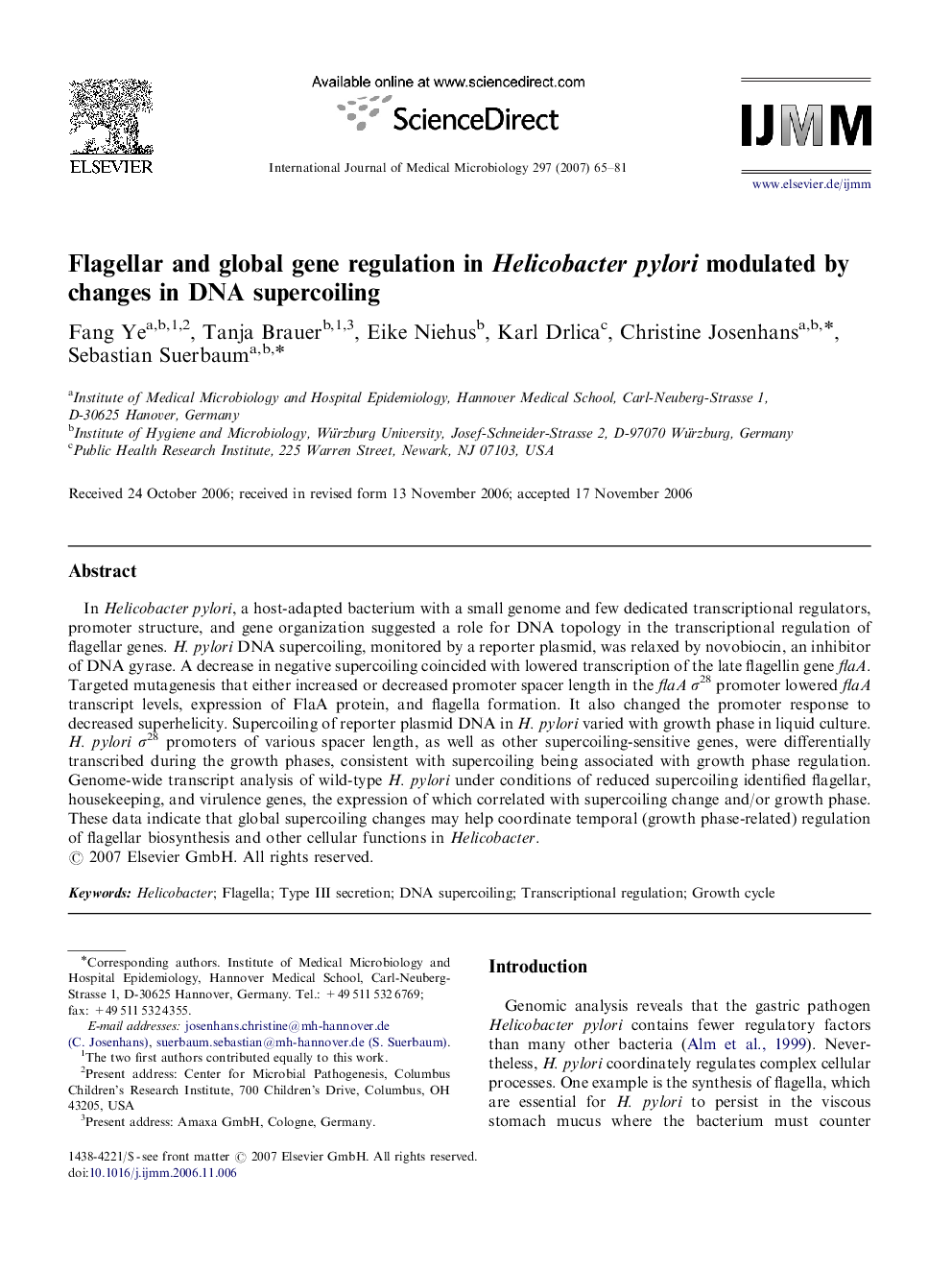| Article ID | Journal | Published Year | Pages | File Type |
|---|---|---|---|---|
| 2055013 | International Journal of Medical Microbiology | 2007 | 17 Pages |
In Helicobacter pylori, a host-adapted bacterium with a small genome and few dedicated transcriptional regulators, promoter structure, and gene organization suggested a role for DNA topology in the transcriptional regulation of flagellar genes. H. pylori DNA supercoiling, monitored by a reporter plasmid, was relaxed by novobiocin, an inhibitor of DNA gyrase. A decrease in negative supercoiling coincided with lowered transcription of the late flagellin gene flaA. Targeted mutagenesis that either increased or decreased promoter spacer length in the flaA σ28 promoter lowered flaA transcript levels, expression of FlaA protein, and flagella formation. It also changed the promoter response to decreased superhelicity. Supercoiling of reporter plasmid DNA in H. pylori varied with growth phase in liquid culture. H. pylori σ28 promoters of various spacer length, as well as other supercoiling-sensitive genes, were differentially transcribed during the growth phases, consistent with supercoiling being associated with growth phase regulation. Genome-wide transcript analysis of wild-type H. pylori under conditions of reduced supercoiling identified flagellar, housekeeping, and virulence genes, the expression of which correlated with supercoiling change and/or growth phase. These data indicate that global supercoiling changes may help coordinate temporal (growth phase-related) regulation of flagellar biosynthesis and other cellular functions in Helicobacter.
